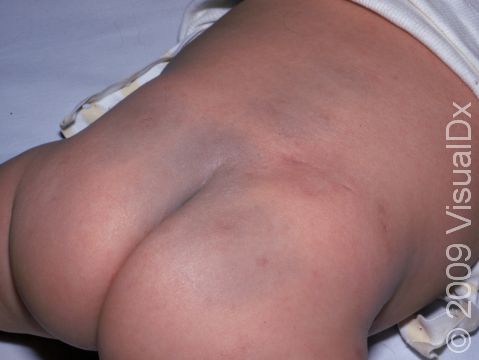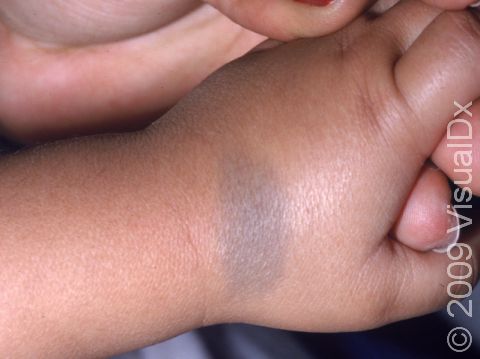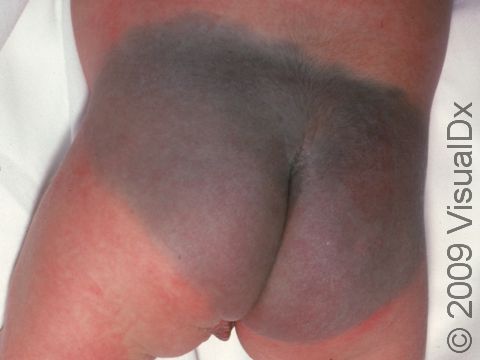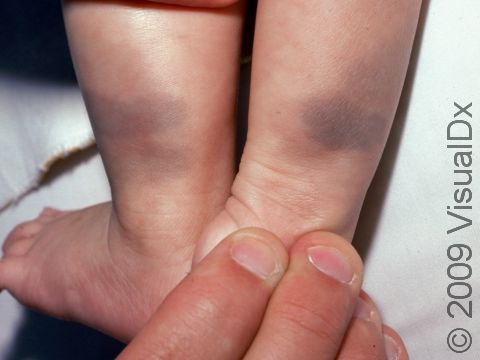Congenital Dermal Melanocytosis (Blue-Gray Spot)
Blue-gray spots, commonly referred to as congenital dermal melanocytosis (and formerly called “Mongolian spots”), are large flat lesions that are usually found on the lower back or buttocks of infants at birth. They can occasionally be found on the legs or shoulders of infants, but this is less common. The color of blue-gray spots ranges from deep brown to slate gray or blue-black. They are caused by collections of pigment-producing cells (melanocytes) located in a deeper layer in the skin and are the most common type of birthmark.
Who's At Risk?
Blue-gray spots are seen in approximately 90% of African Americans and Native Americans, roughly 80% of Asians, 70% of Hispanics, and between 5–10% of whites. Generally, male and female infants are equally affected, although some studies suggest a slightly higher incidence of these birthmarks in males. Additionally, full-term infants are more likely to have blue-gray spots than preterm infants.
Signs & Symptoms
Blue-gray spots may be single or multiple, and they range in size from a few millimeters to 10 centimeters or more in diameter. They are present at birth and, due to their appearance, can be confused for a bruise.
Self-Care Guidelines
There is no self-care for blue-gray spots, though they naturally fade within the first years of life. In very rare cases, they persist into school age years and even into adulthood.
Treatments
There is no therapy or treatment for this diagnosis in infants because it is a harmless condition that should resolve on its own. However, large and numerous spots that persist after a year of life may be associated with rare genetic disorders in a very small number of cases. If there is a strong family history of genetic disorders along with this condition, the child’s physician may decide to send blood to the lab to test for specific genetic diseases, which each have their own specific treatments.
Visit Urgency
Once the diagnosis of a blue-gray spot is made, there is essentially nothing to do except observe the spot over time and wait for resolution. If the spot does not fade within the first years of life, see your child’s physician. Additionally, because this birthmark appears similarly to bruises, if you have any questions about whether or not it was present at birth, it is best to seek medical care.
Trusted Links
References
Ashrafti MR, Shabanian R, Mohammadi M, Kavusi S. Extensive Mongolian Spots: a clinical sign merits special attention. Pediatr Neurol. 2006;34(2):143-145.
Behrman RE, Kliegman R, Jensen HB, eds. Nelson Textbook of Pediatrics. 18th ed. Philadelphia, PA: WB Saunders; 2007.
Paller AS, Mancini AJ. Hurwitz Clinical Pediatric Dermatology: A Textbook of Skin Disorders of Childhood and Adolescence. Philadelphia, PA: Elsevier; 2005.
Last modified on November 14th, 2022 at 8:15 pm

Not sure what to look for?
Try our new Rash and Skin Condition Finder



